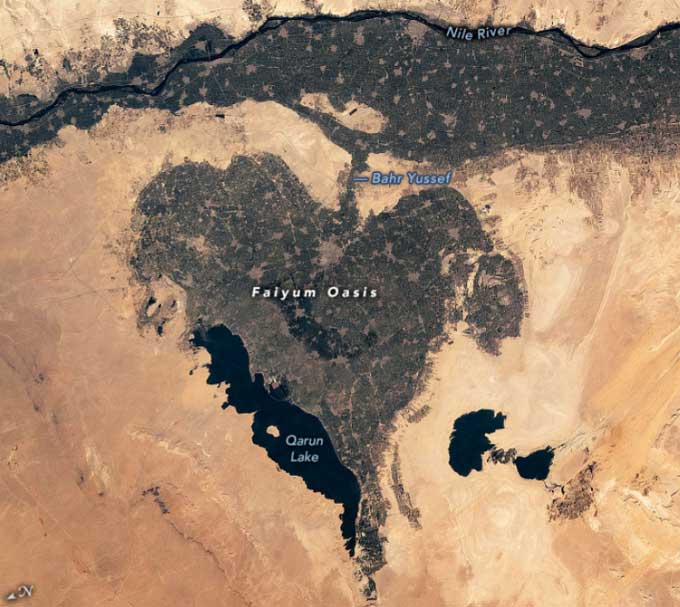Astronauts on the International Space Station Capture Image of a 1,200 km2 Oasis with a Unique Shape in the Desert.
At an altitude of 400 km, astronauts aboard the International Space Station (ISS) looked down at Earth and spotted a heart-shaped oasis standing out in the Egyptian desert last May. On February 14, they shared the image as a special Valentine’s gift to the blue planet, according to NASA’s Earth Observatory.

Heart-shaped Faiyum Oasis located below the Nile River. (Photo: NASA)
The Oasis Named Faiyum is a wetland basin covering more than 1,200 km2. This area has been inhabited for about 8,000 years and is the origin of some ambitious engineering feats from ancient times.
Nourished by Bahr Yussef, a natural canal from the nearby Nile River, the oasis was once a shimmering lake known as Lake Moeris. The existence of the lake depended on seasonal floods from the Nile, according to the Geography Department at University College London (UCL).
When the Nile’s floodwaters were too low, ancient Egyptian rulers sometimes had to take bold measures. Evidence suggests that pharaohs living 4,000 years ago dealt with a severe water shortage by expanding Bahr Yussef to bring water to this area.
This was one of the earliest large-scale national hydrological projects in the world. The kings of the 12th Dynasty, Amenemhat I – III, oversaw this initiative and earned the title “king of engineering,” according to UCL.
Today, the ancient lake continues to exist in the form of the much smaller Lake Qarun. Thanks to these ancient engineering works, the remnants of the vast Lake Moeris still serve as a fertile oasis that supports many villages, towns, farms, and orchards. In the image, the patchy gray areas create the heart shape.
















































